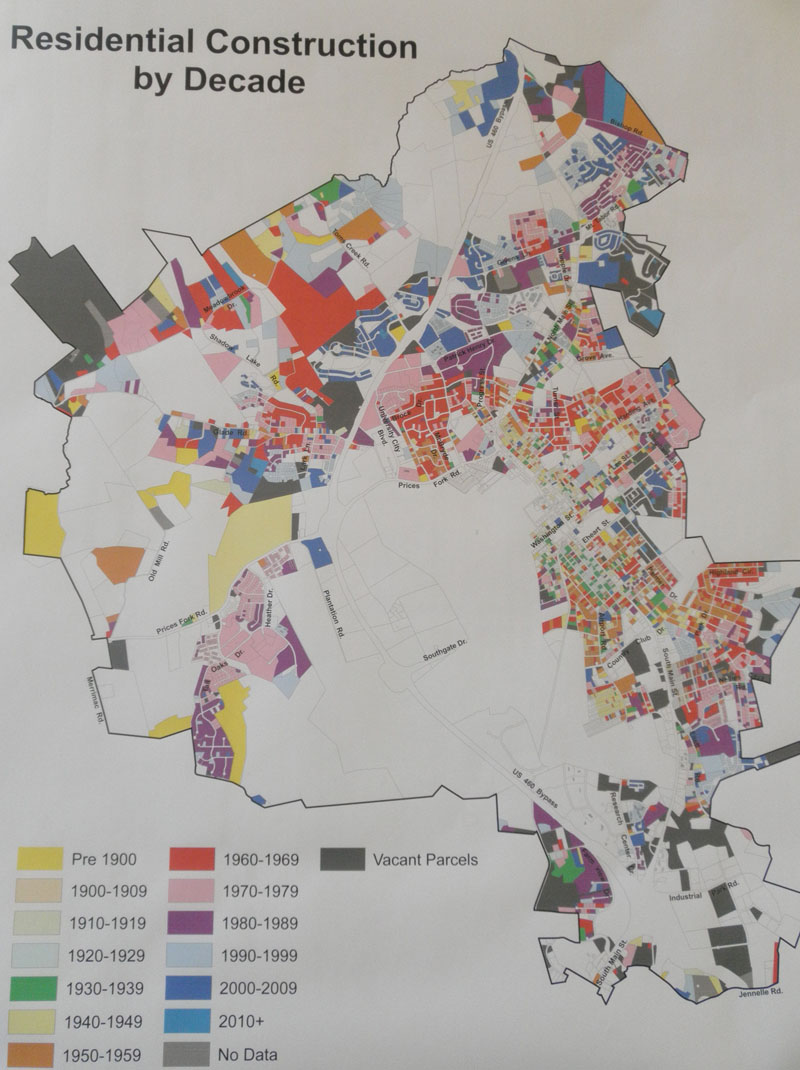
Courtesy of David Hicks
Appendix 18
Planning
One of the foundations of both financial and service delivery decisions is the community’s comprehensive plan. The comprehensive plan is intended to direct a local government’s current and future physical, social, and economic development. This plan answers three key questions:
Town growth map Courtesy of David Hicks |
The planning process offers considerable opportunities for civic engagement as citizens work together to answer these critical questions.
The comprehensive plan includes the land use plan. The land use plan sets the types of uses the community prefers for various geographic locations with attempts to separate and provide buffers among residential, commercial, and industrial uses.
From the land use plan, a zoning map is developed which establishes by ordinance how specific parcels of land can be used: residential, commercial, industrial, or mixed. An appointed planning commission is charged with reviewing and recommending action on development proposals. The governing body has the ultimate power to grant changes in land use.
In addition the enforcement of standards regarding housing, commercial and industrial building construction, and maintenance are often part of the local Planning or Community Development Department's responsibilities. Planners often work in close concert with staff charged with keeping and attracting new businesses to broaden the tax base beyond residential activities and provide well-paying jobs for local residents.